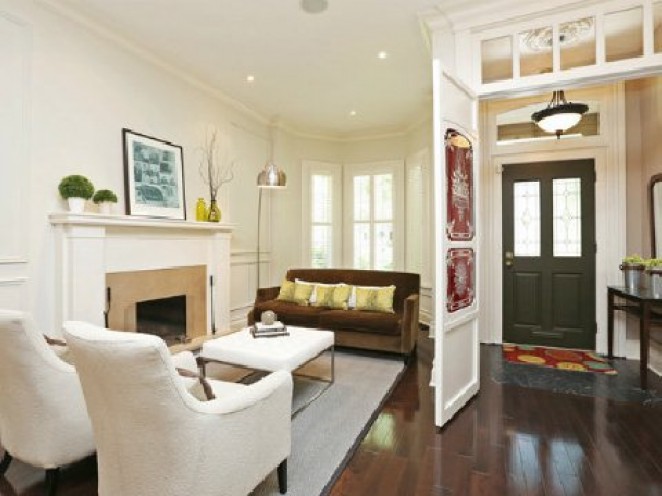Nov 08
20130
commentsBy Gary Goba
Tagsbest agent best real estate agent Chestnut Park condo condominium down payment downpayment Home Buyers' Plan house market update mortgage real estate tips rebate rebate program rebate programs top agent toronto condo toronto market update toronto real estate market toronto real estate market update Toronto's best
Toronto Real Estate Market Update October 2013
October marked the fifth consecutive month in which reported sales of residential properties have outpaced the same month in 2013. Since June the greater Toronto market place has produced 31,049 property sales. During the same period last year only 25,987 properties were reported sold. This represents an increase of over 5000 property sales or 19.2 percent. October’s results were a carbon copy of this 4 month period. 8000 properties were reported sold. An increase of 19.2 percent compared to the 6,713 properties reported sold in October 2012. October’s results clearly have dispelled any notion that the recent increase in sales activity in the greater Toronto area was an aberration.
Previous market updates posited that the recent increase in sales activity may have been due to a perceived fear that mortgage interest rates were climbing higher. Increases in interest rates combined with the rising average sale price for Toronto properties would make home ownership unaffordable for a large number of potential buyers, in particular first time buyers. During the month of October mortgage interest rates actually came down. Five year fixed rates at 3.49 percent are now available. Since rates are not now anticipated to increase anytime soon, Toronto’s strong resale market is not likely to abate and will continue into 2014. The increasing cost of purchasing a house in Toronto and perhaps the intervention of the Federal Minister of Finance are the only factors likely to curb the current strong market.
Adding to these strong market conditions is the lack of available properties for sale. In October 13,110 new listings were delivered to the resale market place. This is a decline of 4.2 percent compared to the 13,685 delivered in 2012. Heading into November only 18,557 properties were available to buyers in the greater Toronto area. Last year there were 20,737, a decline of 10.5 percent. Interestingly sales of semi-detached homes declined by 2.4 percent in the Toronto market place. This decline was not due to demand, but to supply. This is reflected by the fact that in October the average sale price for semi-detached house sales in Toronto increased by 11.7 percent, almost the equivalent of the increase in the average sale price of detached homes (12.4 percent).
May of this year established the highest average sold price in the greater Toronto area at $ 540,544. October came very close to matching that achievement. The average sale price for all properties sold was $539,058, a 7.4 percent increase compared to the average sale price of $502,127 produced in October 2012. The average sale price for detached homes in the City of Toronto came in at $873,509. Semi-detached homes were a little less expensive at $642,112. Unfortunately there is not much supply for buyers to choose in the case of semi-detached homes. In Toronto’s central core area the cost of a detached house was $1,369,135, this is slightly off from the $1,397,683 it cost to by a similar type house in September.
Generally high end, luxury home sales (properties having a sale price of $ 1 Million or more) continued the improvement witnessed in September. In October 550 properties were reported sold in this category. This compares very favourably to the 378 sold in October 2012, and the 371 sold in October 2011. An increase of approximately 50 percent. 90 of these high end sales exceeded $ 2 Million. 8 of these 90 reported sales were condominium apartments, the rest were detached homes. No semi-detached property sales exceeded $ 2 Million.
Condominium apartment sales have continued to do well in the second half of 2013. In October condominium apartment sales exceeded the results of the overall market. Sales increased by 20.4 percent in the City of Toronto compared to last year. The increase in sales was accompanied by an increase in average sale prices. In October the average sale price of a condominium apartment was $ 384,441, an increase of 7.2 percent. Notwithstanding the improvement in condominium sales, they still take longer to sell than other types of properties, averaging 33 days in the in the City of Toronto. Overall sales in the greater Toronto market place (including condominium apartments) were achieved in 27 days. Sales were much faster for various housing types and various areas of the City. For example sales of semi-detached homes in the eastern trading districts took place in only 13 days. Sales of these types of homes were even faster in the central districts, coming in at an astounding 12 days. Condominium apartment sales brought the overall average for days-on-market to 27 days.
Looking forward more of the same can be expected in November and December, with of course, the seasonal adjustment coming to play. There is simply no economic change that is anticipated that might cause the current market conditions to change.
Prepared by Chris Kapches, Chestnut Park Real Estate Limited, Brokerage





